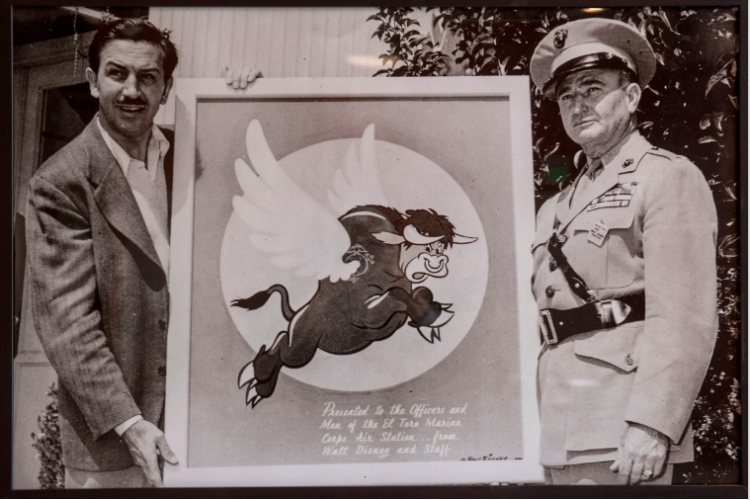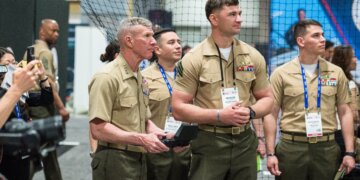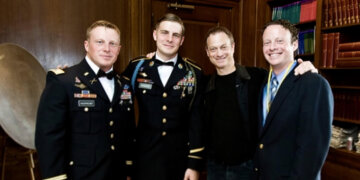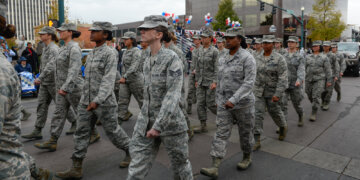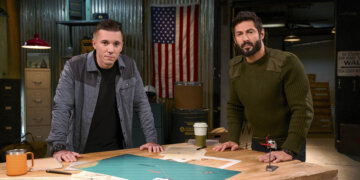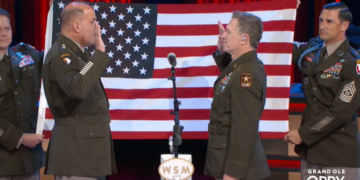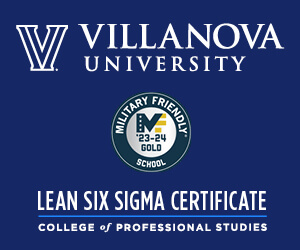The Second World War saw the U.S. military swell in size to an unprecedented 16,000,000 personnel. New units were constantly created to organize the behemoth force. Of course, every new unit needs its own unique insignia. So, who better to draw a new insignia than the talented artists at the Walt Disney Animation Studio?
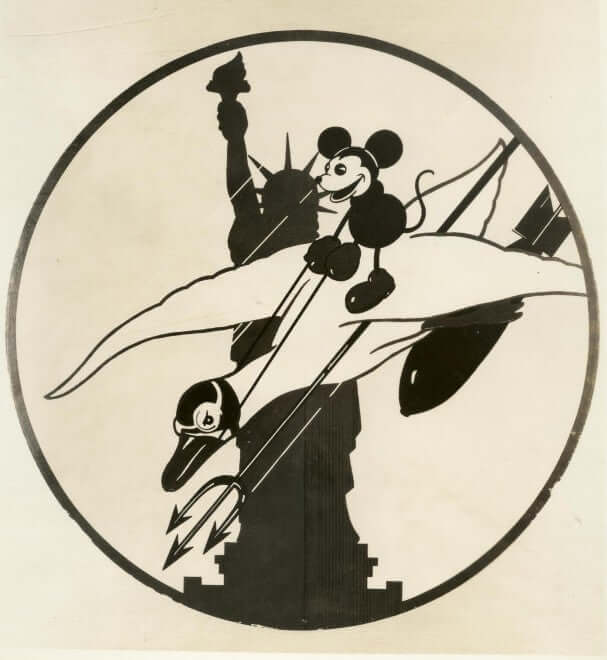
By the time America entered WWII, Disney animations had proven themselves as true feature-length films with box-office toppers like Snow White and the Seven Dwarfs, Pinocchio, Fantasia, and Dumbo.
Disney’s animated shorts had already gained immense popularity to the point where Mickey Mouse was depicted on the patch of a Naval Reserve Squadron.
Although unsanctioned by Disney, the pre-war patch started a trend that exploded across the military during WWII.
In fact, Disney had to dedicate five artists to the full-time task of filling requests for military insignias.
The Navy in particular had a fondness for incorporating Disney characters into its insignias. Here are some examples.
MCAS El Toro
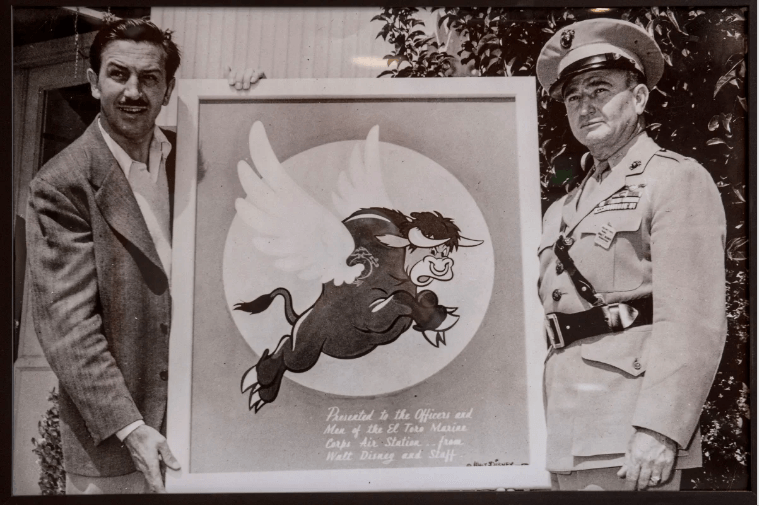
About 60 miles south of Walt Disney Animation Studios in Burbank, California was Marine Corps Air Station El Toro. Spanish for “The Bull,” Disney designed the base’s logo to be a flying bull proudly wearing the Marine Corps’ Eagle, Globe, and Anchor on its shoulder. Walt Disney presented the logo himself to the base’s commanding officer. The flying bull remained the base’s logo until its closure in 1999.
Aviation Repair Unit 1
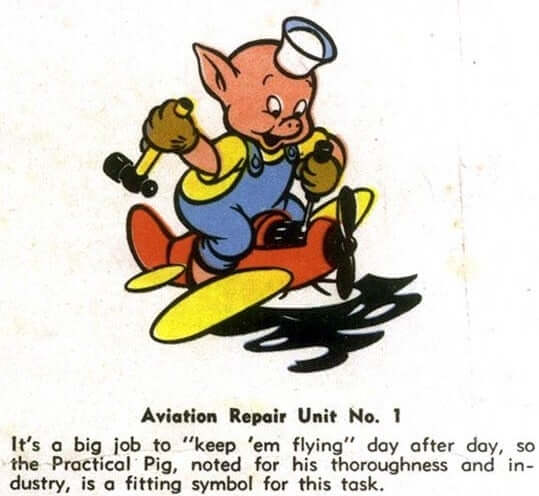
Not to be confused with Porky Pig, the Disney-designed logo for Aviation Repair Unit 1 comes from the 1933 Silly Symphony Disney short Three Little Pigs.
It recounted the classic tale of three fraternal pigs named Fiddler Pig, Fifer Pig and Practical Pig going up against the Big Bad Wolf.
To represent a unit of aircraft maintainers, the Practical Pig was a natural fit.
USS Wasp (CV-7)

USS Wasp (CV-7) was the sole ship of its class and was built to use up the remaining tonnage allowed to the U.S. under existing treaties of the time.
As a result, she was smaller than her Yorktown-class counterparts and more vulnerable.
Because of this, she was deployed the Atlantic until losses at the battles of Coral Sea and Midway forced the Navy to bring Wasp to the Pacific.
After supporting the invasion of Guadalcanal, the carrier was struck by three torpedoes from Japanese submarine I-19.
Damage control was unable to contain the fires that broke out and Wasp was abandoned and scuttled.
The ship’s logo depicted the fighting spirit of its sailors with a wasp wearing Navy whites and boxing gloves.
USS Baya (SS-318)
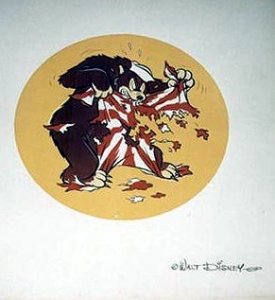
USS Baya (SS-318) was a Balao-class submarine launched and commissioned in 1944.
From August 23, 1944 to July 25, 1945, the ship completed five patrols in the South China Sea, Gulf of Siam, Java Sea, and Philippine Sea.
During this time, it sank four Japanese vessels.
Fittingly, the ship’s insignia features a grizzly bear from the Silly Symphonies short films wearing a Navy dixie cup and tearing apart a Japanese flag.
USS Piedmont (AD-17)
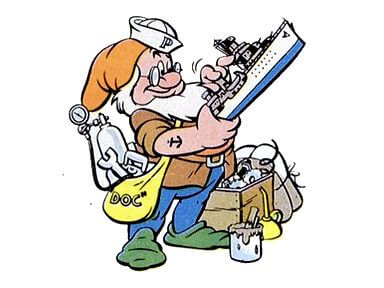
USS Piedmont (AD-17) was a Dixie-class destroyer tender built for WWII.
Its job was to service destroyers near combat areas and keep them in fighting shape.
Piedmont was kept busy in the Pacific supporting the Marianas campaign, Philippine invasion, and the battles of Iwo Jima and Okinawa.
Representing the hard work that Piedmont‘s sailors put in to maintaining destroyers, the ship’s insignia depicts Doc from Snow White and the Seven Dwarfs wearing a dixie cup atop his iconic stocking cap and using an assortment of equipment to fix up a destroyer.



